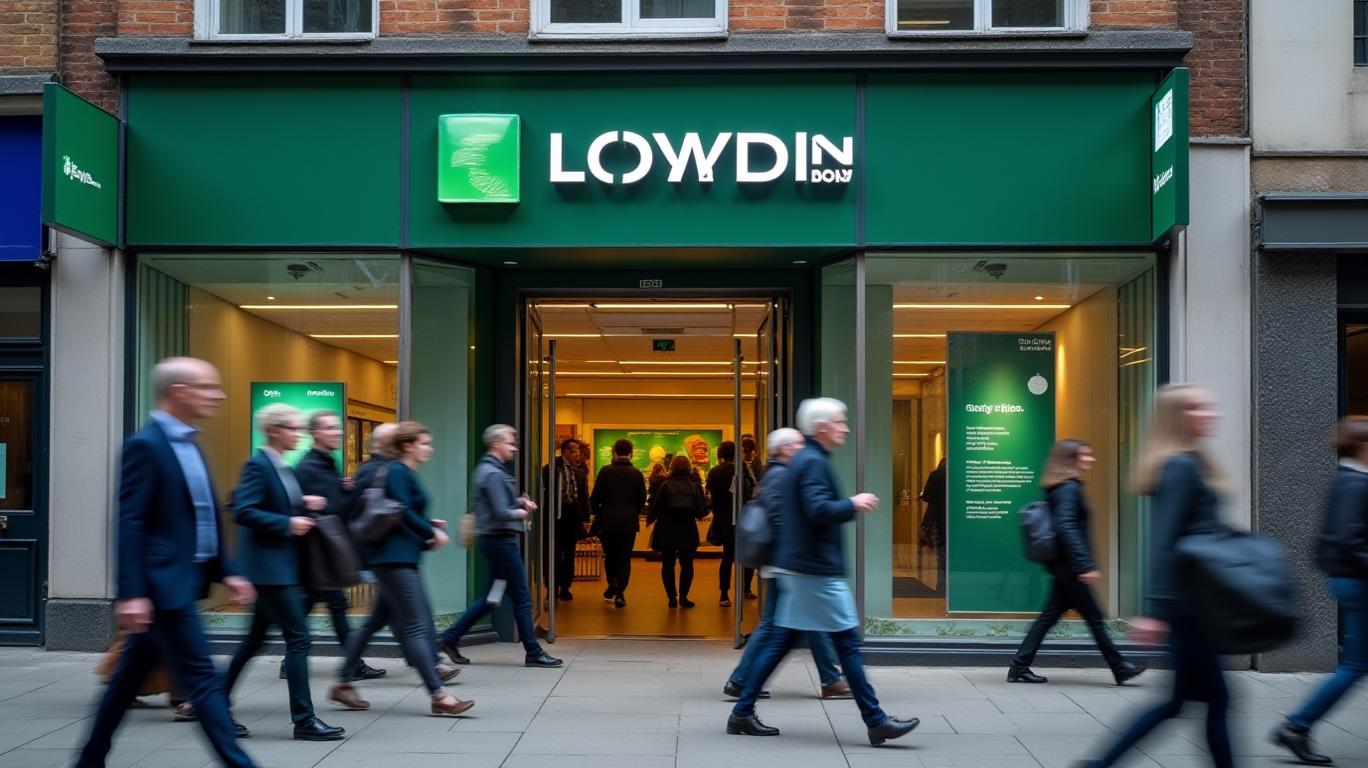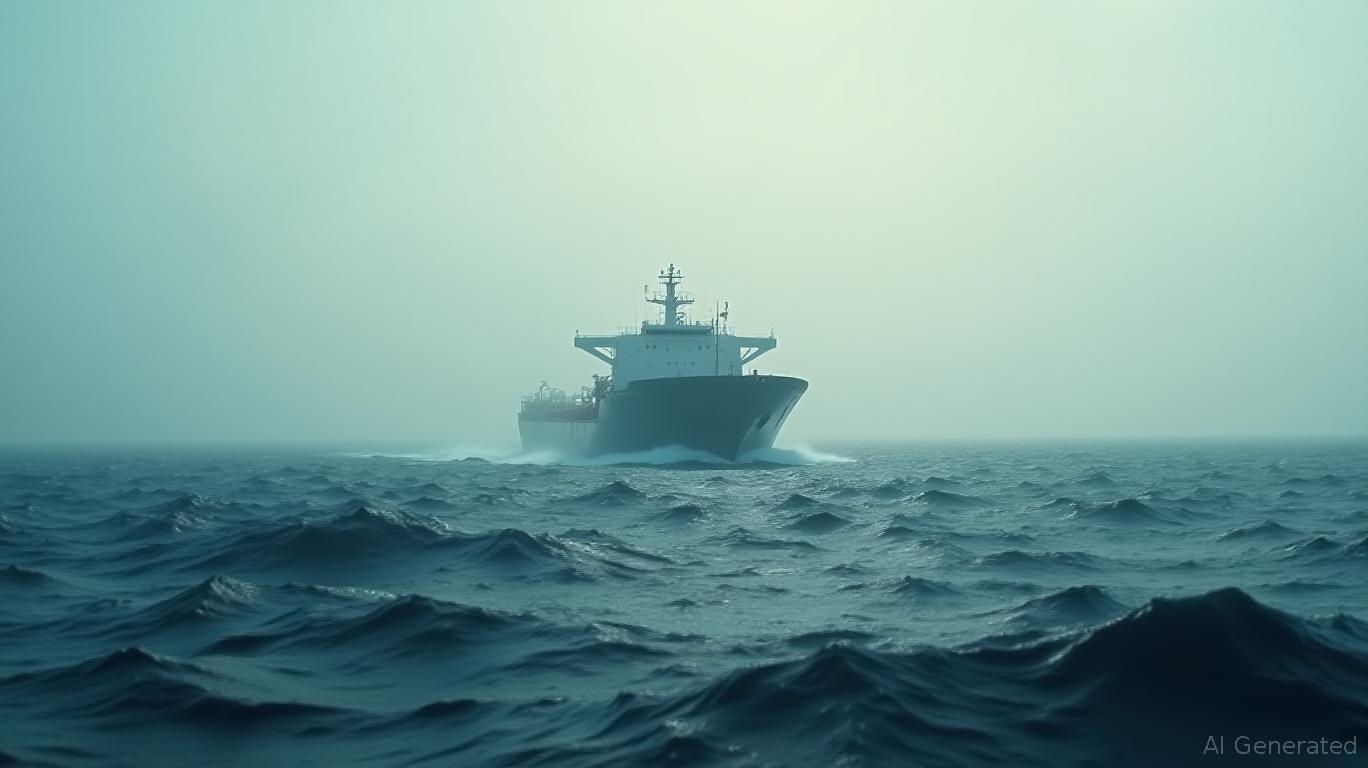Lloyds Banking Navigates Challenges with Steady Revenue and Reaffirmed Outlook
Lloyds Banking Group has reported a mixed start to 2025, with its first-quarter results highlighting resilience in core revenue streams despite margin pressures and rising costs. The UK’s largest retail bank posted a GAAP earnings per share (EPS) of 1.70 pence, a 14% decline year-on-year, alongside £3.29 billion in net interest income, a 3% increase from 2024. These figures, while below some analyst expectations, underpin Lloyds’ reaffirmed full-year 2025 outlook, signaling confidence in its strategic trajectory amid macroeconomic uncertainty.

Revenue Growth Amid Headwinds
Lloyds’ Q1 results reflect a nuanced picture of growth and cost challenges. While statutory profit after tax dropped 7% to £1.13 billion, this marked a 62% rebound from Q4 2024’s weaker performance. The net interest margin (NIM) improved to 3.03%, up 6 basis points quarter-on-quarter, driven by hedge tailwinds that offset pressures from competitive mortgage pricing and deposit costs. Meanwhile, other income surged 8% year-on-year to £1.45 billion, fueled by strong performances in motor and general insurance, as well as corporate and investment banking.
However, operating costs rose 6% year-on-year to £2.55 billion, primarily due to front-loaded severance expenses tied to efficiency initiatives. Excluding these costs, the increase was a more modest 3%, underscoring management’s focus on cost discipline.
Strategic Priorities and FY25 Outlook
Lloyds reaffirmed its full-year 2025 guidance, projecting:
- Net interest income of £13.5 billion.
- Operating costs of £9.7 billion.
- An asset quality ratio (AQR) of ~25 basis points, with expected credit losses at £3.7 billion.
- A return on tangible equity (RoTE) of ~13.5%, supported by capital generation of ~175 basis points.
The bank also outlined ambitious 2026 targets, including a cost-to-income ratio below 50% (down from 60% in 2024) and a RoTE exceeding 15%, alongside a CET1 ratio target of ~13.0% by year-end. These goals hinge on cost-cutting initiatives, such as branch closures and digital transformation, which aim to streamline operations while maintaining lending momentum.
Key Risks and Challenges
Lloyds faces notable headwinds that could test its outlook:
1. Motor Finance Scandal: Ongoing legal battles over car loan commissions have led to £133 million in provisions, with potential upward revisions posing a risk to future earnings.
2. Margin Pressures: While the NIM improved quarter-on-quarter, competitive deposit rates and repricing of fixed-rate mortgages at lower rates may limit full-year margin expansion.
3. Economic Uncertainty: Lloyds’ base-case scenario assumes 1.0% UK GDP growth in 2025, with unemployment peaking at 4.7%. Rising provisions (£309 million in Q1) reflect cautious assumptions about loan defaults in a slowing economy.
Why the Reaffirmed Outlook Matters
Despite these challenges, Lloyds’ reaffirmed guidance signals management’s confidence in its ability to navigate the UK’s economic environment. Key positives include:
- Lending Growth: Total lending rose £7.1 billion (2% quarter-on-quarter) to £466.2 billion, driven by mortgage demand amid stable house prices.
- Deposit Stability: Deposits grew £5.0 billion (1% quarter-on-quarter) to £487.7 billion, bolstering funding liquidity.
- Capital Strength: The CET1 ratio remained at 13.5%, comfortably above regulatory requirements, with a £2 billion share buyback program supporting tangible net asset value (TNAV) growth to 54.4 pence per share.
Conclusion: A Resilient, if Uneven, Path Forward
Lloyds’ Q1 results highlight a bank balancing growth opportunities with cost and risk management. While the 14% EPS decline underscores near-term pressures, the reaffirmed FY25 outlook—backed by robust lending, deposit growth, and capital discipline—suggests Lloyds remains on track to meet its long-term targets.
Investors should monitor two critical factors:
1. Cost Reduction Progress: Achieving a cost-to-income ratio below 50% by 2026 will require sustained efficiency gains, particularly in digital transformation and branch rationalization.
2. Credit Quality: With provisions rising fourfold year-on-year, any further deterioration in loan performance could strain profitability.
Lloyds’ stock, trading at a 1.5x P/B ratio compared to its 5-year average of 1.3x, reflects this cautious optimism. While risks persist, the bank’s domestic focus and strong capital position position it to weather UK economic headwinds—a critical advantage in an uncertain landscape.
In short, Lloyds’ reaffirmed outlook is a vote of confidence in its strategy, but execution will be the ultimate test. For now, the numbers suggest resilience, if not yet outright recovery.










